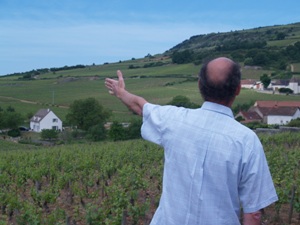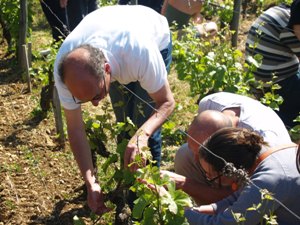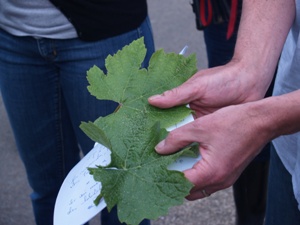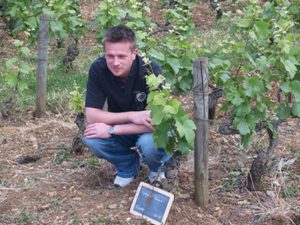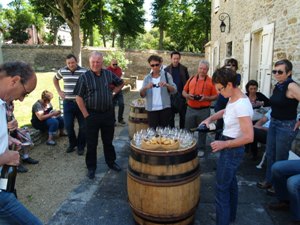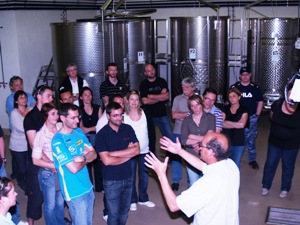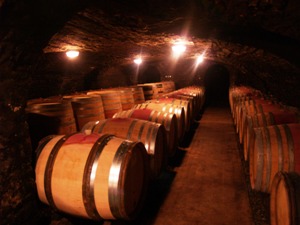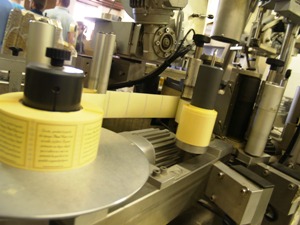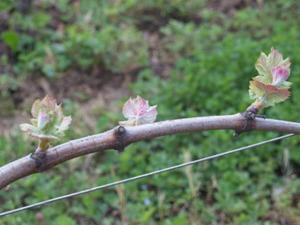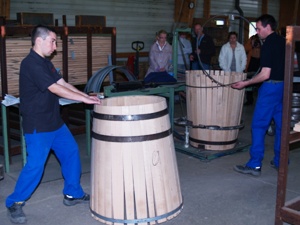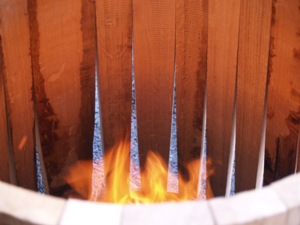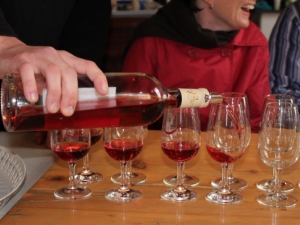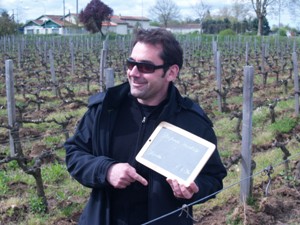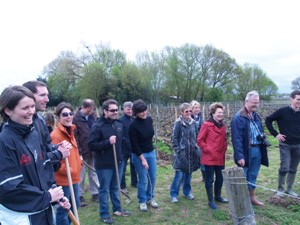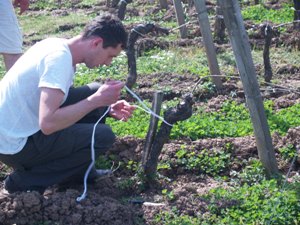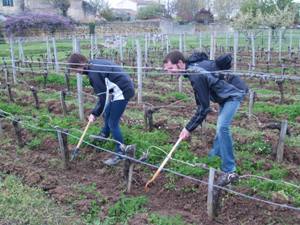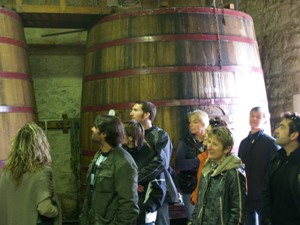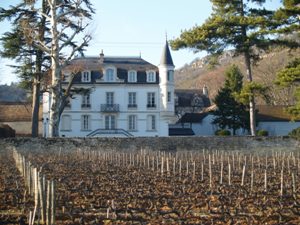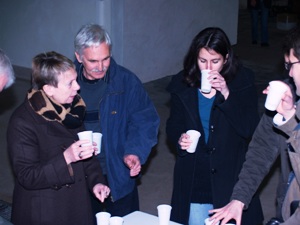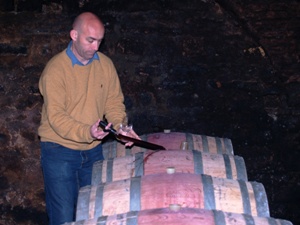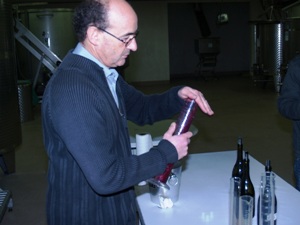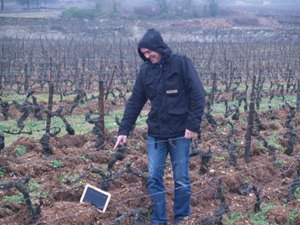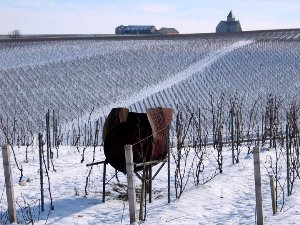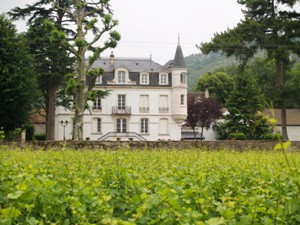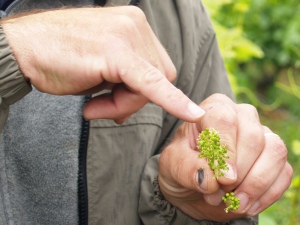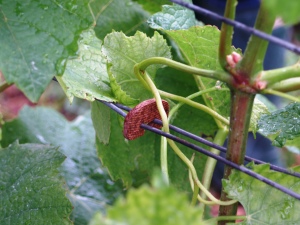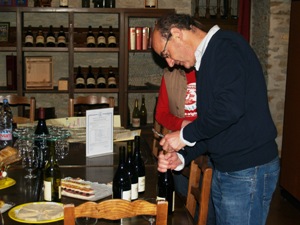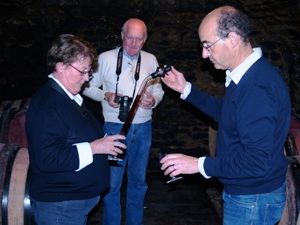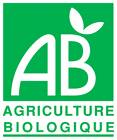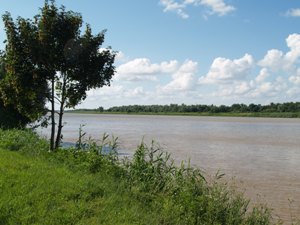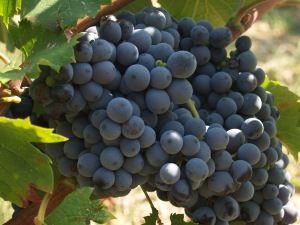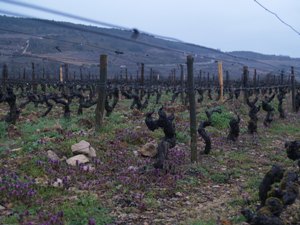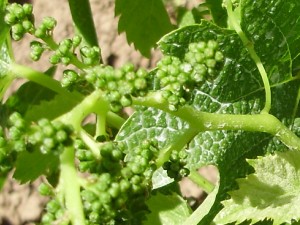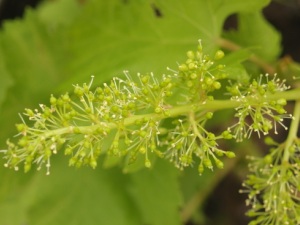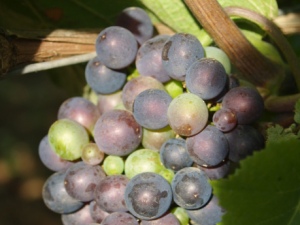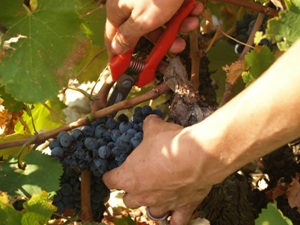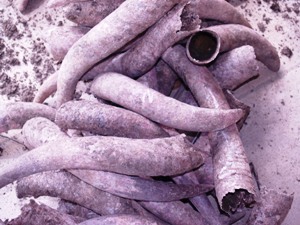
The Wine Experience days are a hands-on and practical way for our adopt-a-vine clients to learn more about wine making and the life of a winemaker in the main French wine growing regions.
Watch the video
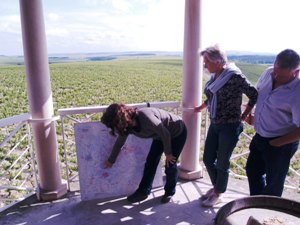
To introduce us to the Chablis wine growing region, we stepped out onto the terrace at Domaine Jean-Marc Brocard to survey the surrounding vineyards. From this great vantage point Céline Brocard-Guegen, pointed out and explained the differences in terroir between the four local appellations, Petit Chablis, Chablis, Chablis Premier Cru and Chablis Grand Cru, and briefly explained the history of the winery that her father started some 40 years ago with a small plot of vines that were loaned to him.
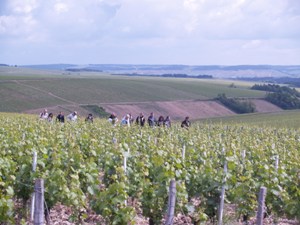
We then walked to the Boissonneuse vineyard, home to the Gourmet Odyssey adopt-a-vine plot. This vineyard was the first of the winery's vines to be converted to organic and biodynamic cultivation. We were accompanied by Yvonnick, head of biodynamics at Domaine Jean-Marc Brocard, who talked us through the various of stages of working on the vines from pruning to harvesting.
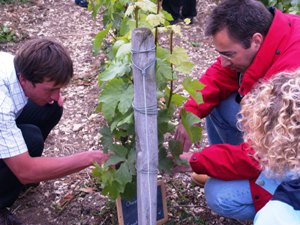
As always during a Gourmet Odyssey Wine Experience Day, there is
some work involved, and the task was to de-bud the vines
(ébourgeonnage). Yvonnick explained the importance of
de-budding to improve the quality of the grapes by concentrating
the growth and energy of the vines into the future fruit-bearing
canes. He showed us how to select the stems to detach, and
which ones were to be left alone.
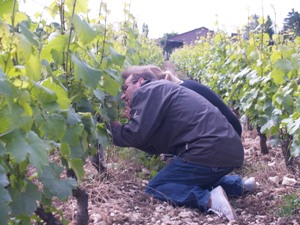
Each client then set off to find their adopted vines, and began
putting into practice what Yvonnick had just explained.
Luckily Céline and Yyvonnick were at hand to guide us, as it's
not always as simple as you would think!
We learnt about how the vines are treated organically, and were also introduced to the world of biodynamics. The Experience Day was planned to coincide with one of the key biodynamic events that is undertaken at Domaine Jean-Marc Brocard, the digging up of cow horns, filled with cow dung, that have been buried for six months! First impressions of biodynamic farming are often that it is all a bit of hocus-pocus and wizardry, so you need to keep an open mind and bear in mind the underlying principles of biodynamics, that is to improve the structure of the soil, and to strengthen the natural defenses of the plant from disease.
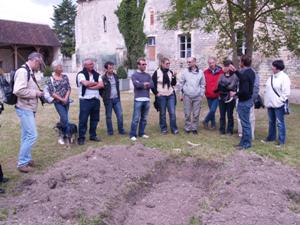
The cow horns had been interred in the fertile grounds of the old
priory in Chablis that also belongs to the Brocard family. During
the six months the cow manure ferments to form a fibrous super
concentrated compost, that when mixed with collected rainwater
and spread amongst the vines, helps to improve the soil structure
and enhance the life of micro-organisms.
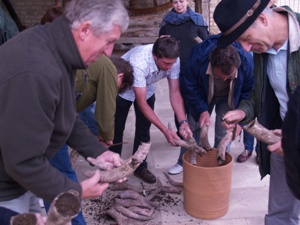
Our job was to remove the fermented cow dung from the
horns. Not as smelly and dirty a task as you might
think! In fact the cow dung has a sweet and rich aroma!
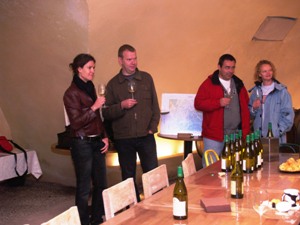
Intrigued, amazed, disbelieving, no one was left indifferent as
we returned to the winery to finally taste some of the wines from
Domaine Jean-Marc Brocard, including the Petit Chablis Sainte
Claire 2009, Chablis La Boissonneuse 2009, Chablis Premier Cru
Vau de Vey 2009, Chablis Premier Cru Vaulorent 2008, Chablis
Grand Cru Valmur 2008 and ending with the Chablis Grand Cru Les
Preuses 2009.
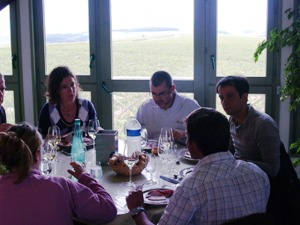
During the meal of local Chablis charcuterie and cheese, we
continued the wine tasting with a Chablis Premier Cru Montmains
2002 and the domaine's Irancy 2008 red wine.
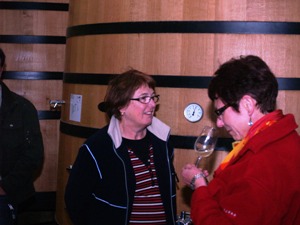
The afternoon finished with a tour of the fermentation hall to
see the mix of oak and stainless steel vats that are used to
ferment and age the wines. A final tasting was in store of
the unfinished 2010 wines, direct from the vats!
Many thanks to Yvonnick and Céline for giving us an insight into the life at the winery, and for introducing us to the weird and wonderful world of biodynamic winemaking!
Watch the video



